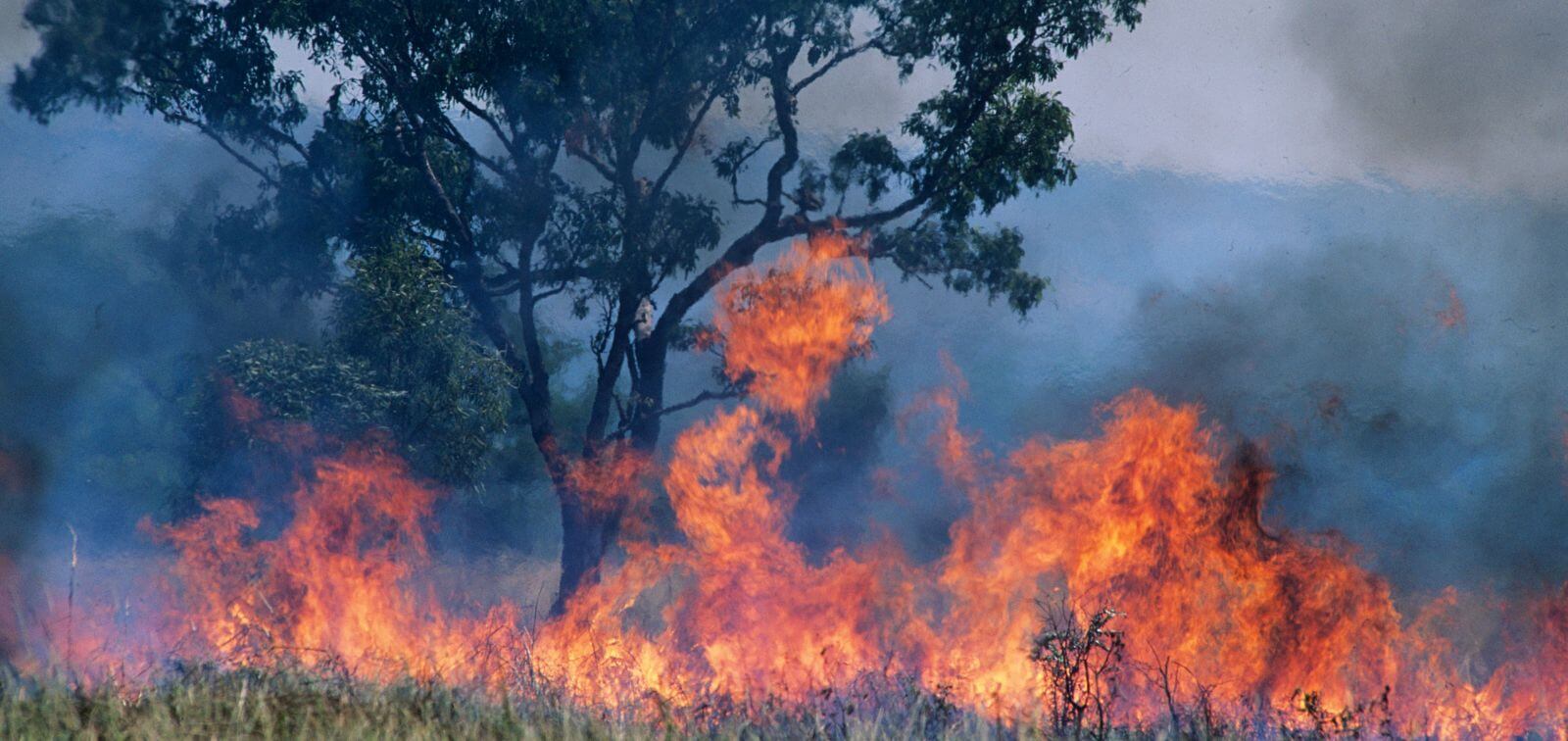Landscape Fire Smoke May Affect Children's Respiratory Health
A study in southern Mozambique assesses the association between landscape fire smoke particles and the risk of hospital visits and admissions in children
12.01.2024
Landscape fire smoke may contribute to respiratory morbidity in children, according to a study led by the Barcelona Institute for Global Health (ISGlobal), a centre supported by the "la Caixa" Foundation, and the Manhiça Health Research Centre (CISM). The study, whose results have been published in The Lancet Planetary Health, assessed the association between smoke particles from landscape fires and the risk of all-cause and respiratory-linked hospital visits and admissions among children in Manhiça district, southern Mozambique, an area characterised by frequent forest and cropland fires.
The research team used global models developed by the Finnish Meteorological Institute to estimate daily levels of fire-originated PM2.5 in Manhiça between 2012 and 2020. The daily number of hospital visits and admissions was extracted from the paediatric morbidity surveillance system run by the CISM, focusing on children aged 15 years or younger. This is the first study to examine the association between landscape fire smoke particles and child morbidity in a low-income country.
Landscape fires include both forest and agricultural fires. Through their associated emissions, landscape fires have negative effects on human and planetary health, causing mortality and acute and chronic health conditions, contributing to climate change, and degrading ecosystems.
More hospital visits directly after fire smoke exposure
More than 507,000 hospital visits from over 79,000 children and almost 9,000 hospital admissions from over 7,300 children were recorded during the study period. The results showed significant associations between landscape fire smoke particles and increased all-cause and respiratory-linked child (mostly acute upper respiratory infections) hospital visits, especially on the same day and the day following day fires. Specifically, a 10 µg/m3 increase of fire-originated PM2.5 was associated with a 6% increase in all-cause hospital visits and a 12% increase in respiratory-linked hospital visits the following day.
The results revealed stronger associations on child hospital visits for cropland fires than for forest fires, although forest fires were more frequent during the study period. This may be because, in the study area, croplands, mainly sugarcane fields, are closer to human built-up areas than forests. The research did not show associations for hospital admissions, most likely due to the small numbers registered in the surveillance system.
One of the strengths of this study is that it leverages data from ground-based air pollution measurements, rarely available in the region, to assess the correlation of the model estimates with measured total PM2.5. The most recent monitoring effort, conducted in 2021, was made possible through the Severo Ochoa programme's support for environmental surveillance in the study area.
A population especially vulnerable to fire
Children are particularly vulnerable to the respiratory effects of combustion-related air pollution. Some studies have linked landscape fire smoke to an increase in respiratory child hospital visits, especially in children under-five; however, this evidence is limited to high-income countries and may have limited generalisability to low- and middle-incomes countries due to differences in determinants of child health.
"Children in sub-Saharan Africa may be more vulnerable due to the high burden of pre-existing acute and chronic infections, nutritional deficiencies, poor quality housing, high exposure to household air pollution, and low adaptive capacity to environmental hazards and extreme weather events," explains Ariadna Curto, ISGlobal researcher and first author of the study.
In fact, sub-Saharan Africa is the region most affected by landscape fires, accounting for 70% of the total area burned worldwide, and most of these fires are agricultural, which sets it apart from high-income countries. "Like many countries in sub-Saharan Africa, Mozambique is experiencing an increased risk of landscape fires due to climate change. It is important to quantify how this climate change-induced hazard is affecting child health in the region," says Cathryn Tonne, ISGlobal researcher and senior author of the study.
Reference
Curto, A., Nunes, J., Milà, C., Nhacolo, A., Hänninen, R., Sofiev, M., Valentín, A., Saute, F., Kogevinas, M., Sacoor, C., Bassat. Q., Tonne, C. Associations between landscape fires and child morbidity in southern Mozambique: a time-series study. The Lancet Planetary Health. 2024. Doi: 10.1016/S2542-5196(23)00251-6



